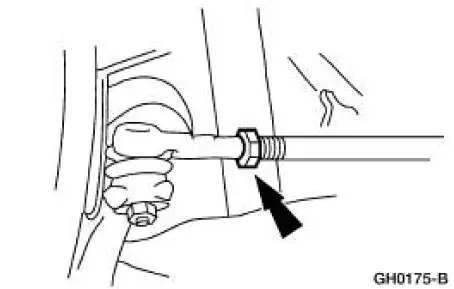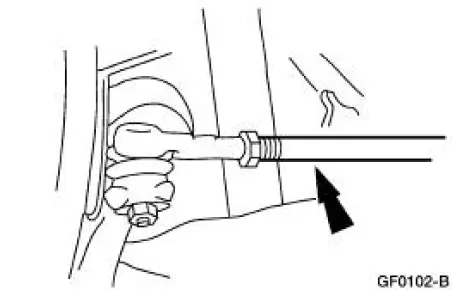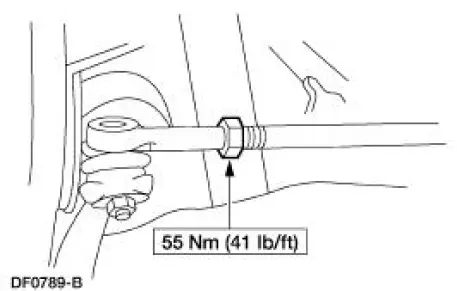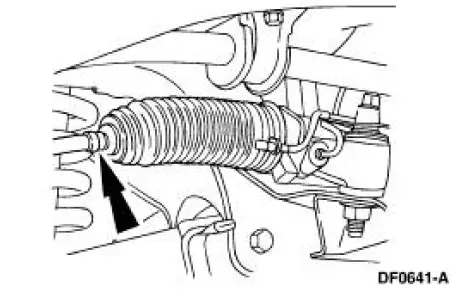Ford Mustang (1999-2004) Service Manual: Toe Adjustment - Front
1. Start the engine and center the steering wheel.

2. Turn the engine off, and hold the steering wheel in the straight forward position by attaching a rigid link from the steering wheel to the seat.
3. Check the toe settings. Follow the manufacturer's instructions.
4. Remove the clamps.

5. Loosen the nuts.
- Clean and lubricate the nut(s) and front wheel spindle tie-rod threads.

6. NOTE: Do not allow the steering gear bellows to twist when the front wheel spindle tie-rod (3280) is rotated.
Rotate the front wheel spindle tie-rods.

7. Tighten the nuts.

8. Install the clamps.

9. Recheck the toe settings. Follow the manufacturer's instructions.
 Camber Adjustment - Rear
Camber Adjustment - Rear
1. Loosen the nut.
2. Rotate the bolt and the cam to the correct camber setting.
3. Tighten the nut while holding the bolt and the cam stationary.
4. Recheck the wheel alignment. Follow the manu ...
 Toe Adjustment - Rear
Toe Adjustment - Rear
1. Loosen the nuts.
To prevent damage to the ball joints, hold the tie-rod ends while
loosening the nuts.
2. Rotate the toe link to the correct toe setting.
3. Tighten the nuts.
To ...
Other materials:
Engine (Removal)
Special Tool(s)
Lifting Bracket, Engine
303-D087 (D93P-6001-A1)
Lifting Bracket, Engine
303-D088 (D93P-6001-A2)
Spreader Bar
303-D089 (D93P-6001-A3)
Removal
All vehicles
1. Disconnect the battery ground cable. Fo ...
Module - Passive Anti-Theft Transceiver
Removal
1. CAUTION: Electronic modules are sensitive to electrical
charges. If exposed to
these charges, damage may result.
Disconnect the battery ground cable (14301).
2. Remove the ignition switch lock cylinder (11582).
1. Insert the ignit ...
Master Cylinder Priming - In-Vehicle or Bench
WARNING: Brake fluid contains polyglycol ethers and polyglycols. Avoid
contact with
eyes. Wash hands thoroughly after handling. If brake fluid contacts eyes, flush
eyes with
running water for 15 minutes. Get medical attention if irritation persists. If
take ...
